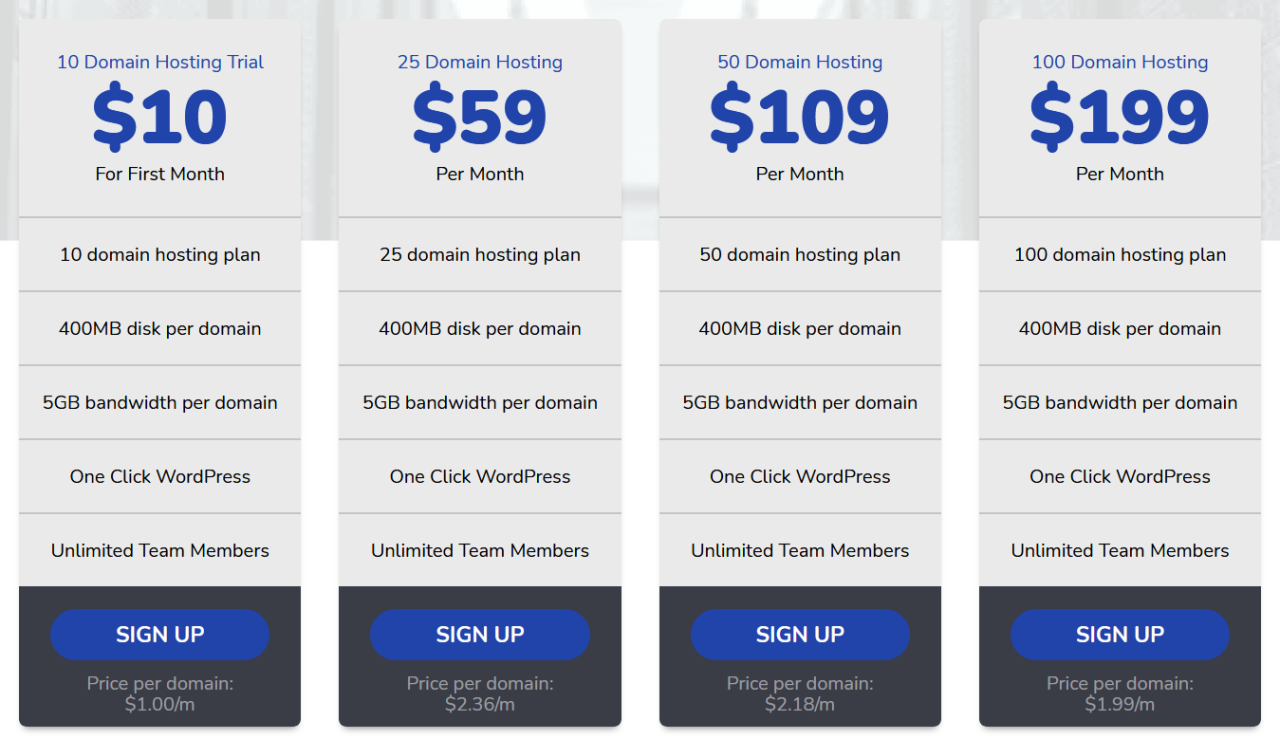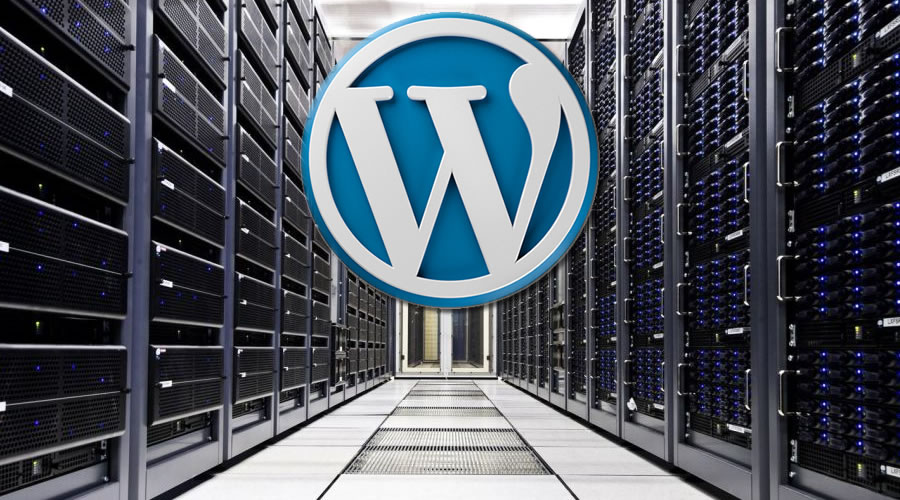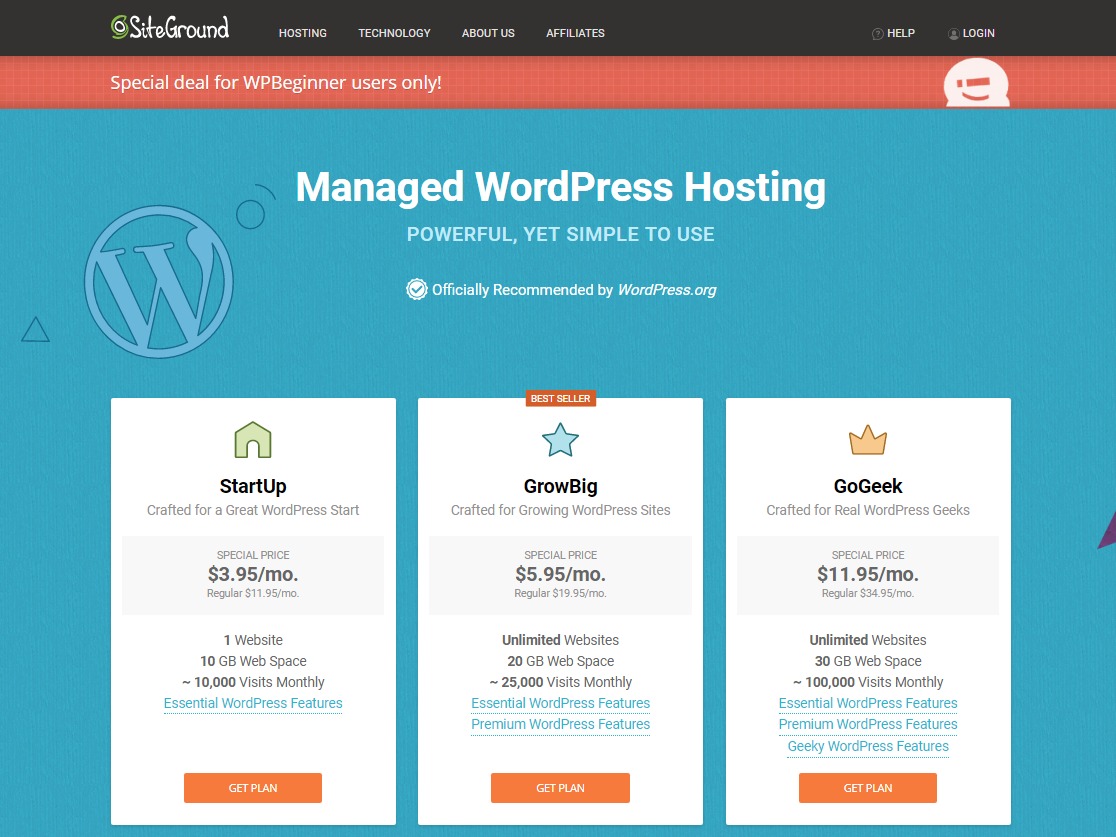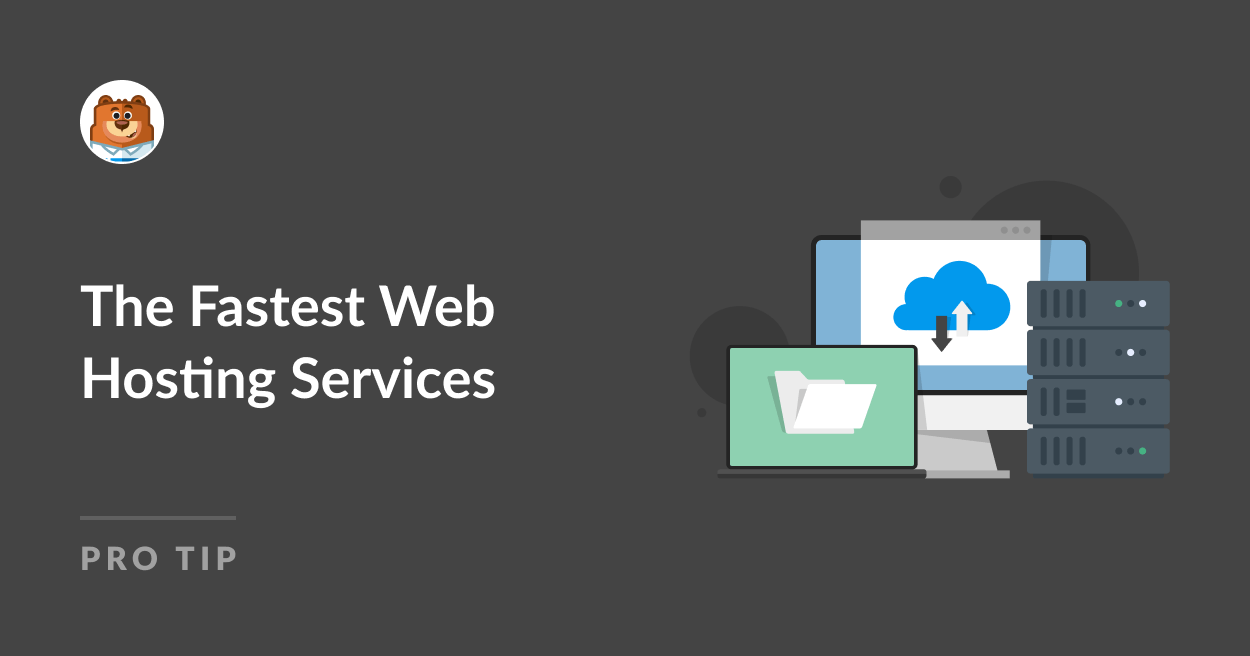Buy hosting is the first step towards establishing your online presence, whether you’re launching a personal blog, a business website, or an e-commerce platform. Choosing the right hosting plan can significantly impact your website’s performance, security, and overall success. This guide will delve into the essential aspects of buying hosting, from understanding your needs to selecting the best provider and optimizing your website for speed and security.
This comprehensive guide explores the various hosting options available, highlighting their pros and cons. You’ll learn how to evaluate hosting providers based on crucial factors like uptime, security, performance, and customer support. We’ll also discuss the essential features to look for in a hosting plan, including website builder tools, email accounts, databases, and security features.
Understanding Hosting Needs
Choosing the right hosting plan is crucial for your website’s success. It’s like selecting the foundation for your online presence. You need to consider various factors to ensure your website performs optimally, is secure, and can handle your traffic effectively.
Types of Hosting
The type of hosting you choose depends on your website’s specific needs and your budget. There are four main types of hosting:
- Shared Hosting: This is the most affordable option, where multiple websites share the same server resources. It’s suitable for small, low-traffic websites with minimal resource demands.
- VPS Hosting: Virtual Private Server (VPS) hosting provides more resources and control than shared hosting. You have your own dedicated space on a server, offering better performance and security. This is a good option for websites with moderate traffic and resource needs.
- Dedicated Hosting: With dedicated hosting, you get an entire server exclusively for your website. This offers the highest level of performance, security, and control. It’s ideal for high-traffic websites, demanding applications, and businesses with critical data.
- Cloud Hosting: This type of hosting utilizes a network of servers to distribute your website’s resources. It offers scalability, reliability, and flexibility, making it suitable for websites with fluctuating traffic and resource demands.
Comparing Hosting Types
Each hosting type has its advantages and disadvantages, making it important to choose the one that best suits your website’s requirements:
| Hosting Type | Pros | Cons | Suitable for |
|---|---|---|---|
| Shared Hosting |
|
|
|
| VPS Hosting |
|
|
|
| Dedicated Hosting |
|
|
|
| Cloud Hosting |
|
|
|
Key Factors to Consider
When choosing hosting, it’s important to consider these key factors:
- Website Traffic: Estimate the expected traffic volume for your website. Shared hosting might be suitable for low traffic, while VPS or dedicated hosting is better for high-traffic websites.
- Storage Requirements: Determine the amount of storage space your website needs. This depends on the size of your files, including images, videos, and databases.
- Desired Features: Consider the features you need, such as email accounts, databases, security features, and website management tools.
- Budget: Set a realistic budget for hosting. Shared hosting is the most affordable option, while dedicated hosting is the most expensive.
Choosing the Right Hosting
By carefully considering these factors, you can choose the right hosting plan that meets your website’s needs and budget.
Essential Hosting Features
Choosing the right hosting plan is crucial for your website’s success. While understanding your needs is important, you also need to consider the essential features that come with your hosting plan. These features can significantly impact your website’s performance, security, and user experience.
Website Builder Tools, Buy hosting
Website builder tools simplify website creation, even for users with limited coding knowledge. They often offer pre-designed templates and drag-and-drop interfaces, making it easy to customize your website’s layout and content.
- Ease of Use: Website builders provide a user-friendly interface, allowing you to create and manage your website without extensive technical expertise.
- Pre-designed Templates: Choose from a variety of professional-looking templates to quickly get your website up and running.
- Drag-and-Drop Functionality: Easily add and rearrange elements like text, images, and videos on your website pages.
- Mobile Optimization: Ensure your website looks great on all devices, including smartphones and tablets.
Email Accounts
Email accounts are essential for communication and business operations. Your hosting plan should provide you with enough email accounts to meet your needs.
- Professional Email Addresses: Use email addresses that match your domain name (e.g., [email protected]), giving your business a professional image.
- Email Management Tools: Access features like spam filters, email forwarding, and storage space to manage your emails effectively.
- Email Marketing Integration: Integrate with email marketing platforms to send newsletters, promotions, and other marketing communications.
Databases
Databases are essential for storing and managing website data, such as user information, product catalogs, and blog posts.
- Data Storage and Management: Databases provide a structured way to store and retrieve website data, ensuring efficient access and organization.
- Dynamic Content: Enable dynamic content on your website, such as personalized user profiles, product recommendations, and interactive forms.
- Security: Databases offer features like user authentication and data encryption to protect sensitive information.
Security Features
Security is paramount for any website. Your hosting plan should include features that protect your website and data from threats.
- SSL Certificates: Secure your website with an SSL certificate, encrypting data transmitted between your website and visitors, ensuring secure communication and building trust.
- Firewalls: Act as a barrier, preventing unauthorized access to your website and protecting it from malicious attacks.
- Malware Scanning: Regularly scan your website for malware and viruses, preventing infections and protecting your data.
- Data Backups: Create regular backups of your website data, ensuring you can recover from data loss due to accidents or security breaches.
Website Monitoring
Website monitoring tools help you track your website’s performance and uptime, ensuring it’s accessible to visitors.
- Uptime Monitoring: Track your website’s availability, notifying you if it goes down, allowing for quick troubleshooting and minimizing downtime.
- Performance Monitoring: Analyze your website’s speed and loading times, identifying potential bottlenecks and optimizing performance for a better user experience.
- Security Monitoring: Detect security threats and suspicious activities, enabling you to take immediate action to protect your website and data.
Cost Considerations

Hosting costs can vary widely depending on your needs and the provider you choose. Understanding the factors that influence pricing is crucial for making an informed decision and finding a cost-effective solution.
Pricing Models
Different hosting providers employ various pricing models to cater to diverse customer requirements. The most common models are:
- Pay-as-you-go: This model allows you to pay only for the resources you consume, making it ideal for websites with fluctuating traffic. You are charged based on your usage, such as storage space, bandwidth, and processing power. This model provides flexibility and can be cost-effective for websites with unpredictable traffic patterns.
- Fixed monthly subscription: This model involves paying a fixed monthly fee for a predetermined set of resources. You get a specific amount of storage, bandwidth, and other features included in your plan. This model provides predictable costs and is suitable for websites with consistent traffic.
- Tiered pricing: This model offers different pricing tiers based on the resources included in each plan. As you move up to higher tiers, you get more storage, bandwidth, and advanced features. This model provides options for different website sizes and traffic levels, allowing you to choose a plan that best suits your needs.
Factors Influencing Cost
Several factors contribute to the overall cost of hosting, including:
- Plan features: The features included in a hosting plan significantly impact its price. For example, plans with more storage space, bandwidth, and advanced features, such as website backups, security monitoring, and email accounts, will typically be more expensive.
- Storage space: The amount of storage space you need for your website files, databases, and other content influences the hosting cost. Websites with large media files, such as images and videos, require more storage space, leading to higher costs.
- Bandwidth: Bandwidth refers to the amount of data that can be transferred to and from your website in a given time. Websites with high traffic volume require more bandwidth, resulting in higher hosting costs.
- Hosting type: The type of hosting you choose also affects the price. Shared hosting, where multiple websites share the same server resources, is generally the most affordable option. Dedicated hosting, where you have an entire server dedicated to your website, is the most expensive but provides maximum performance and control.
- Location: The physical location of the server hosting your website can influence costs. Data centers in certain regions may have higher operational costs, leading to slightly higher hosting prices.
Value Proposition
When comparing hosting plans, it’s essential to consider the value proposition they offer. This involves analyzing the features included, the price point, and the overall performance and reliability of the provider.
- Features: Evaluate the features included in each plan and determine if they align with your website’s requirements. Features such as website backups, security monitoring, and email accounts can be crucial for your website’s functionality and security.
- Price point: Compare the prices of different plans and ensure they fit your budget. Consider the value you get for the price, considering the features, performance, and support offered.
- Performance and reliability: Look for hosting providers with a proven track record of delivering high performance and reliability. Consider factors like server uptime, loading speeds, and customer support responsiveness.
Tips for Finding Cost-Effective Hosting
Finding a cost-effective hosting solution doesn’t mean compromising on quality and performance. Here are some tips:
- Start with a basic plan: Begin with a basic hosting plan and upgrade as your website’s needs grow. This allows you to avoid paying for unnecessary resources upfront.
- Look for discounts and promotions: Many hosting providers offer discounts and promotions for new customers or during specific periods. Take advantage of these offers to save money.
- Consider cloud hosting: Cloud hosting offers flexibility and scalability, allowing you to pay only for the resources you use. This can be a cost-effective option for websites with fluctuating traffic.
- Optimize your website: A well-optimized website can reduce resource consumption, leading to lower hosting costs. Compress images, minify code, and use caching to improve performance and reduce bandwidth usage.
- Compare prices from multiple providers: Don’t settle for the first hosting provider you find. Compare prices and features from multiple providers to find the best value for your money.
Website Migration
Moving your website to a new hosting provider can be a significant undertaking, but it can also be an opportunity to improve your website’s performance, security, and scalability. This section will guide you through the website migration process, addressing key steps, migration methods, potential challenges, and strategies for minimizing downtime and data loss.
Steps Involved in Website Migration
Website migration involves a series of steps to ensure a smooth transition of your website to a new hosting environment. The steps typically include:
- Choosing a New Hosting Provider: Carefully evaluate different hosting providers based on your website’s specific needs, such as website traffic, storage requirements, and budget.
- Creating a Backup of Your Website: Before initiating the migration process, create a complete backup of your website files and database. This backup serves as a safety net in case of any unexpected issues during the migration.
- Data Transfer: Transferring your website’s files and database to the new hosting environment is a crucial step. You can use various methods for data transfer, including FTP (File Transfer Protocol), SFTP (Secure File Transfer Protocol), or a website migration tool provided by your new hosting provider.
- Domain Name Updates: Update your domain name’s DNS (Domain Name System) records to point to the new hosting provider’s servers. This step is crucial for directing visitors to your website on the new hosting environment.
- Website Testing: After transferring your website and updating DNS records, thoroughly test your website on the new hosting environment to ensure everything functions correctly. Verify that all pages load properly, forms submit successfully, and any website features operate as expected.
Choosing the Right Migration Method
The choice of migration method depends on factors such as the size and complexity of your website.
- Manual Migration: This method involves manually transferring website files and databases using FTP or SFTP. It is suitable for smaller websites with limited files and databases.
- Website Migration Tools: Many hosting providers offer website migration tools that automate the transfer process. These tools can simplify the migration process, especially for larger and more complex websites.
- Professional Migration Services: If you have a complex website or lack the technical expertise, consider hiring professional migration services. These services handle the entire migration process, ensuring minimal downtime and data loss.
Potential Challenges During Website Migration
Website migration can present several challenges that require careful planning and execution.
- Downtime: Minimizing downtime during the migration process is crucial to avoid impacting user experience and potential revenue loss. Implementing strategies like staged migration, using a temporary domain, or utilizing a migration tool with downtime reduction features can help mitigate downtime.
- Data Loss: Data loss can occur during the migration process due to errors in data transfer or incomplete backups. It’s essential to create comprehensive backups before starting the migration and verify data integrity after the transfer.
- Compatibility Issues: Ensure compatibility between your website’s software and the new hosting environment. Differences in server configurations or software versions can cause issues. Thoroughly test your website after migration to identify and resolve any compatibility problems.
- Security Risks: Website migration can introduce security vulnerabilities if proper security measures are not implemented. Ensure your new hosting provider offers robust security features and that you configure your website securely on the new environment.
Strategies for Minimizing Downtime and Data Loss
Implementing specific strategies can minimize downtime and data loss during website migration.
- Staged Migration: Migrate your website to a staging environment first, allowing you to test and troubleshoot before switching to the live environment. This approach reduces the risk of downtime and data loss on your live website.
- Use a Temporary Domain: Set up a temporary domain for your website during the migration process. This allows you to test the website on the new hosting environment without affecting your live website. Once you are satisfied with the migration, switch your domain name to the new hosting environment.
- Website Migration Tools: Utilize website migration tools offered by your hosting provider. These tools automate the transfer process, reducing the potential for human errors and minimizing downtime.
- Regular Backups: Create regular backups of your website files and database. This ensures you have a copy of your website data in case of any issues during the migration process.
Website Security
In the digital realm, your website is your online storefront, a platform for sharing your ideas, or a tool for connecting with your audience. Just like a physical store, your website needs to be secure to protect your valuable assets—your data, your reputation, and your customers’ trust.
Common Website Security Threats
Website security threats are a constant concern for website owners. Understanding these threats is crucial for implementing effective security measures.
- Malware: Malware, short for malicious software, can infect your website and steal sensitive information, redirect visitors to malicious websites, or disrupt your website’s functionality. Examples include viruses, worms, and trojan horses.
- SQL Injection: This type of attack exploits vulnerabilities in your website’s database to gain unauthorized access to your data. Attackers can manipulate SQL queries to steal data, modify information, or even delete entire databases.
- Cross-Site Scripting (XSS): XSS attacks allow attackers to inject malicious scripts into your website, which can then be executed by unsuspecting users. This can lead to data theft, account hijacking, or website defacement.
- Denial-of-Service (DoS) Attacks: DoS attacks aim to overload your website’s server with traffic, making it unavailable to legitimate users. This can disrupt your business operations and damage your reputation.
- Brute-Force Attacks: These attacks involve trying multiple passwords or usernames to gain unauthorized access to your website’s accounts. This can be particularly dangerous if you have weak passwords or use the same password across multiple accounts.
Mitigating Security Threats
Protecting your website from these threats requires a proactive approach.
- Firewalls: Firewalls act as a barrier between your website and the internet, blocking unauthorized access and malicious traffic. They examine incoming and outgoing network traffic, filtering out suspicious connections.
- Malware Scanning: Regularly scanning your website for malware is essential. This involves using specialized software to detect and remove any malicious code that may have infected your website.
- Regular Updates: Keeping your website’s software, plugins, and themes up-to-date is crucial. Updates often include security patches that address vulnerabilities exploited by attackers.
Best Practices for Website Security
- Strong Passwords: Use strong, unique passwords for all your website accounts. A strong password is at least 12 characters long, includes a combination of uppercase and lowercase letters, numbers, and symbols, and is not easily guessed.
- Two-Factor Authentication (2FA): 2FA adds an extra layer of security by requiring users to provide two forms of authentication, such as a password and a code sent to their phone. This makes it much harder for attackers to gain unauthorized access to your website.
- Data Encryption: Encrypting sensitive data, such as customer information and financial details, is crucial for protecting it from unauthorized access. Encryption transforms data into an unreadable format, making it useless to attackers.
Choosing a Secure Hosting Provider
The security of your website is directly tied to the security of your hosting provider. Choosing a provider with strong security protocols and proactive security measures is essential.
- SSL Certificates: Ensure your hosting provider offers SSL certificates, which encrypt the communication between your website and visitors, protecting sensitive information like credit card details. Look for providers that offer free SSL certificates as part of their hosting plans.
- Data Backups: Regular data backups are crucial for recovering from data loss caused by security breaches or other incidents. Choose a hosting provider that offers automatic backups and allows you to restore your website from backups easily.
- Security Monitoring: A reliable hosting provider should actively monitor your website for security threats and take immediate action to mitigate any vulnerabilities. Look for providers that offer security monitoring services, such as intrusion detection and prevention systems.
- Security Updates: Your hosting provider should regularly update its server software and security measures to patch vulnerabilities and protect your website from emerging threats.
Website Performance Optimization: Buy Hosting
A fast-loading website is crucial for a positive user experience and improved search engine rankings. Optimizing website performance involves identifying and addressing factors that can slow down your website.
Server Location
The physical location of your website’s server can significantly impact performance. Choosing a server close to your target audience can reduce latency, resulting in faster loading times.
- For example, if your website targets users in North America, choosing a server located in the United States would be more beneficial than one in Europe.
Caching
Caching is a technique that stores copies of frequently accessed website data, such as images, CSS files, and JavaScript files, on the user’s browser or server. This allows the website to load faster when a user revisits the site, as the data is already available locally.
- There are various types of caching, including browser caching, server-side caching, and content delivery networks (CDNs).
- Implementing caching can significantly reduce page load times and improve user experience.
Image Optimization
Images are often the largest files on a website, contributing significantly to page load times. Optimizing images for size and format can significantly improve website performance.
- Use appropriate image formats, such as JPEG for photographs and PNG for graphics with transparency.
- Compress images without compromising quality using tools like TinyPNG or Optimizilla.
- Use responsive images that adjust to different screen sizes, reducing file sizes and improving loading times on mobile devices.
Role of Hosting in Website Performance
The hosting plan you choose can significantly impact your website’s performance. A high-quality hosting plan with sufficient resources, such as CPU, RAM, and storage, can ensure your website runs smoothly and efficiently.
- Shared hosting, which is the most affordable option, often shares resources with other websites, potentially leading to slower performance.
- VPS (Virtual Private Server) hosting provides dedicated resources, offering better performance than shared hosting.
- Dedicated server hosting offers the highest level of performance and control, but it is also the most expensive option.
Ongoing Management and Maintenance
Just like any machine, your website needs regular care and attention to ensure it runs smoothly and delivers a great user experience. This includes tasks like backups, updates, and security monitoring, all of which are essential for keeping your website healthy and protected.
Managed Hosting Services
Managed hosting services provide ongoing support and maintenance for your website, relieving you of the burden of managing these tasks yourself. This can be a great option for businesses that don’t have the time or technical expertise to manage their website in-house.
- Regular Backups: Managed hosting providers automatically create regular backups of your website data, ensuring you can restore your website in case of data loss or a security breach.
- Software Updates: They keep your website software, including the operating system, web server, and other applications, up-to-date with the latest security patches and bug fixes.
- Security Monitoring: Managed hosting providers actively monitor your website for security threats and take steps to mitigate them, such as blocking malicious traffic and implementing security measures.
- Performance Optimization: They optimize your website’s performance by ensuring efficient resource utilization, caching content, and using other techniques to improve load times and user experience.
Maintaining a Secure and Performant Website
Whether you choose managed hosting or manage your website yourself, there are some essential practices you can follow to ensure your website is secure and performs well:
- Strong Passwords: Use strong and unique passwords for all your website accounts, including your hosting account, CMS (Content Management System), and other applications.
- Regular Updates: Keep all your website software, including the operating system, web server, CMS, plugins, and themes, up-to-date with the latest security patches and bug fixes. This is crucial for protecting your website from vulnerabilities that attackers can exploit.
- Website Security Measures: Implement website security measures such as a firewall, anti-malware software, and SSL certificates to protect your website from attacks.
- Website Performance Optimization: Optimize your website’s performance by using a Content Delivery Network (CDN), compressing images, minimizing HTTP requests, and optimizing your code. These measures can significantly improve your website’s loading speed and user experience.
- Regular Monitoring: Regularly monitor your website’s performance and security using tools like Google Analytics and security scanners. This helps you identify and address any issues before they become major problems.
Last Word
As you navigate the world of web hosting, remember that the right hosting solution is crucial for a successful online presence. By understanding your needs, carefully evaluating providers, and prioritizing essential features, you can choose a hosting plan that empowers your website to thrive. Investing in reliable hosting is an investment in your website’s future, ensuring smooth operation, optimal performance, and a positive user experience.




